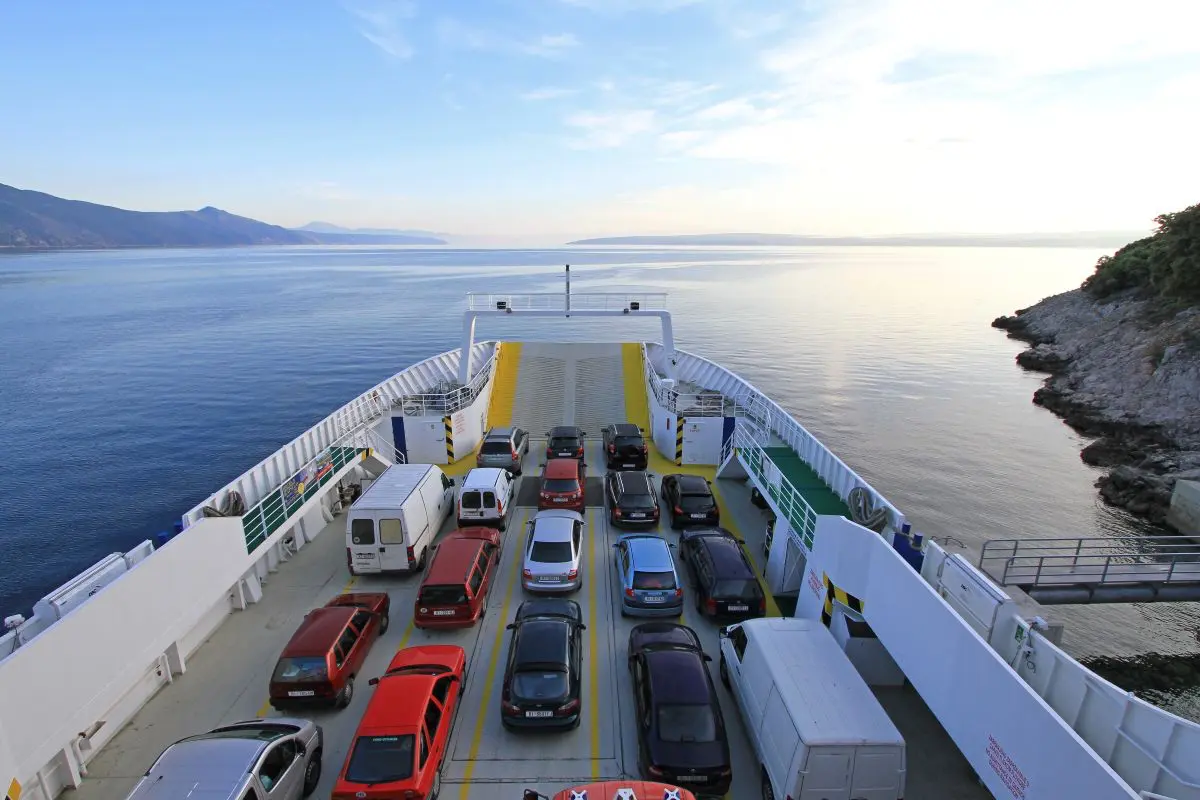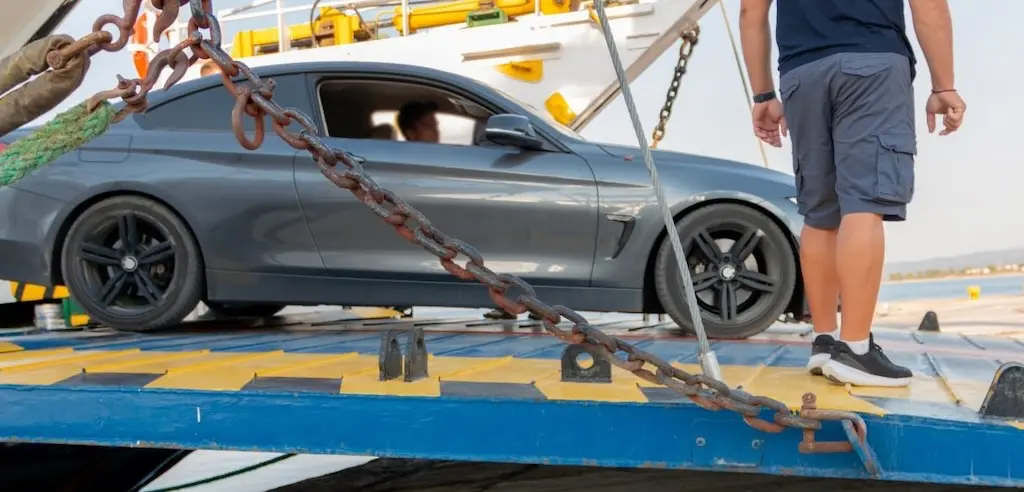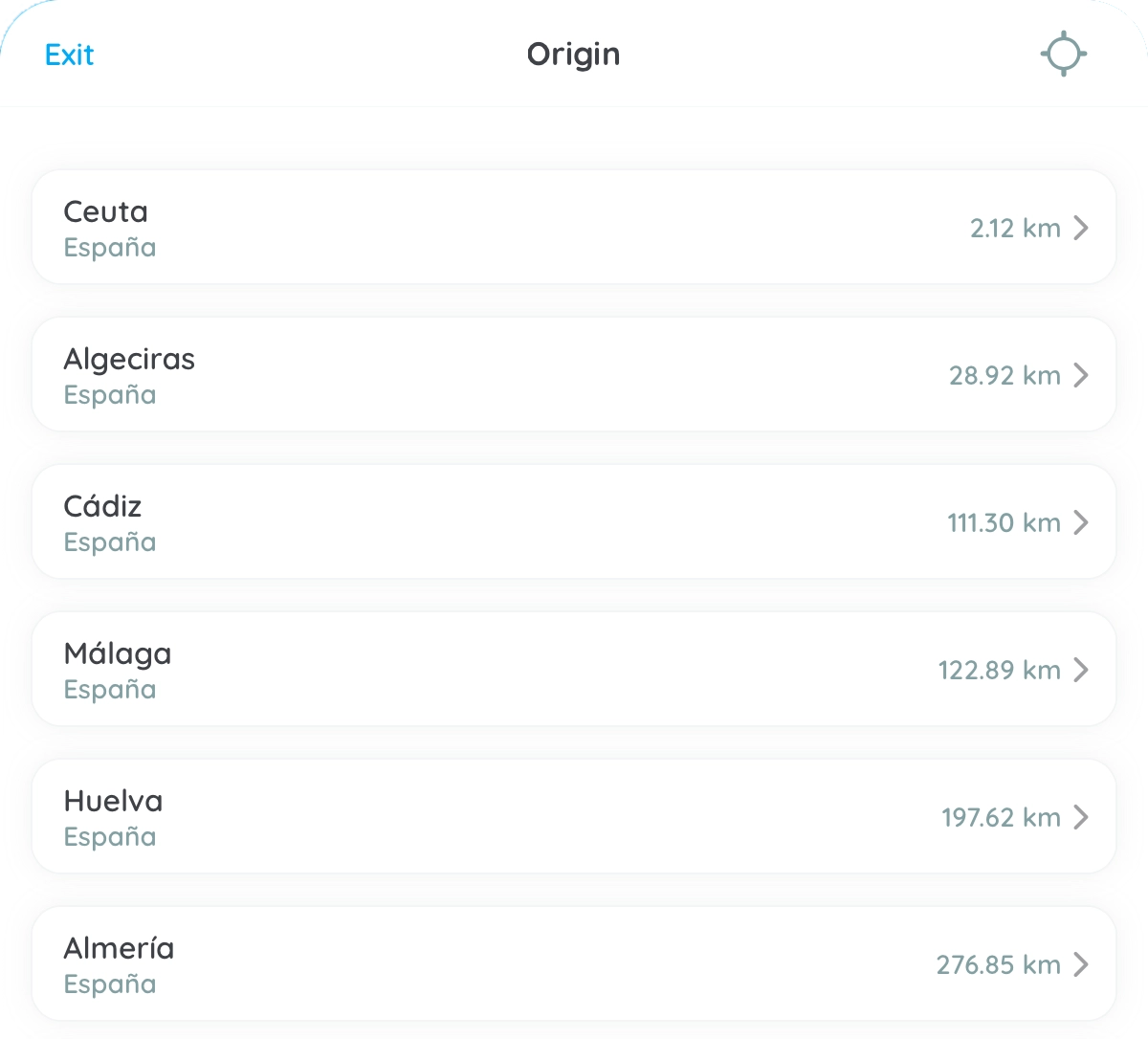
Ferry with a car: Why is it a convenient option?
Ferry 9 Oct 2025
Are you thinking about a getaway, a light move, or a holiday where you don't want to give up your own vehicle? Traveling by ferry with a car gives you real freedom: you arrive, start the engine, and follow your route with no waiting, no transfers, and no luggage puzzles. In this guide we answer all the typical questions (prices, timings, documentation, and restrictions) and share practical tips so that boarding with your car is as easy as driving to the port.

Benefits of traveling by ferry with a car: Comfort and flexibility for your trip
- Bring everything with you, without strict baggage limits: Suitcases, boards, stroller, cooler… even that little plant that wouldn't fit in a suitcase. On ferries, allowances are more flexible and your trunk is your best ally.
- Total freedom on arrival: No waiting for taxis or hunting for rentals. Drive straight off the ship to your hotel, a hidden cove, or your family's town. Ideal for trips with kids, pets, or multi-city routes.
- Savings and cost control: Compared with car hire + transfers + extras, it's often more cost-effective to take your own vehicle. Plus you keep your accessories, child seat, and familiar insurance.
- A more comfortable, unrushed journey: On board you can move around, have a drink, work with Wi-Fi, or sleep in a cabin. You arrive rested and with the car ready to continue your route.
Tips for a stress-free boarding (express checklist)
- Book in advance, especially if you're traveling in summer.
- Check documents: ID/passport, license, insurance, and inspection.
- Measure your vehicle with accessories fitted (roof box, bike rack).
- Arrive 60–120 min early and follow the port signage.
- Do online check-in if available to go straight to the boarding ramp.
- Prepare the car: secure luggage, deactivate the alarm, apply handbrake and leave a gear engaged when parked on the car deck.
- Carry-on bag with the essentials for the crossing (no access to the car deck).
- Pets: confirm the type of accommodation and the onboard rules.
Pro tip: off-peak sailings usually have better prices. If your dates are flexible, try 1 day earlier/later.

Common questions when deciding to take a car ferry
Below are the most frequent doubts, with clear, no-nonsense answers. If it's your first time, start here.
1. How much does it cost to take a car on the ferry?
The price varies by route, season, demand, accommodation type, and the vehicle's dimensions (height/length). As a reference, the ticket is made up of:
- Passengers (you and your companions).
- Vehicle (car, SUV, van, etc.).
- Fees and possible extras (cabin, seat, pet).
Quick tip: book early and stay flexible on times; the first and last sailings of the day often offer more competitive fares. On high-demand routes (summer, holidays) prices rise; booking early avoids last-minute increases and sold-out car spaces.
2. How long does it take to disembark from a ferry with a car?
It depends on the ship size, occupancy, and port operations. Typically, once moored, vehicle disembarkation is completed in 15–45 minutes.
- If you're on upper decks, it may take a little longer.
- Always follow the crew's instructions and wait until your row is cleared to start.
3. How can I book a ferry to travel with a car?
- Search the route (origin/destination) and enter the date, number of passengers, and vehicle type.
- Provide accurate measurements (length/height including bars or roof box if fitted). Systems calculate the space you need.
- Choose time and accommodation (seat, lounge, cabin) and add extras if needed (pet).
- Review conditions: changes, cancellations, and online check-in.
- Confirm and pay. You'll receive an electronic ticket with boarding instructions.
Kikoto tip: our “I'm in a hurry” mode lets you complete your purchase in seconds if your details and vehicle are saved. Perfect for spontaneous getaways.
4. What restrictions apply when traveling by ferry with a car?
- Dimensions: maximum length, width, and height per deck. If you carry a bike rack/roof box or tall roof bars, include them in the measurement.
- Fuel and LPG: tanks must be closed and leak-free. Some ferries limit or restrict LPG/CNG cars; if that's your case, check and declare it when booking.
- Batteries/EV: electric cars are allowed, but charging is generally not permitted on board.
- Hazardous goods: loose cylinders, extra fuel, or solvents are not allowed in passenger vehicles.
- Alarms and handbrake: deactivate the alarm and leave first gear + handbrake (or “P” in automatics).
- Animals: check the pet transport rules (carrier, designated areas) and, if they stay in the car, the access conditions during the crossing.
5. How early should I get to the port if I'm traveling with a car?
As a rule of thumb, plan to arrive 60–90 minutes before departure. In high season or at large, busy ports, allow extra time.
- Some companies offer online check-in, which speeds up boarding.
- Keep your documents and ticket handy to show at the gate.
- Remove sunshades, secure loose luggage, and switch off any devices that might make noise on board.
6. What documents do I need to travel by ferry with a car?
- Valid ID or passport for all passengers.
- Vehicle registration.
- Mandatory insurance in force (and, if you go abroad, the Green Card if required).
- Technical inspection/MOT up to date.
- If you're driving a car not in your name (rental, company, family), carry authorization and, for rentals, the contract.
- International travel: check customs requirements, child-seat rules, and mandatory equipment (high-vis vest, warning triangles or V16 light).
7. Can I access the car during the ferry crossing?
For safety, most ferry lines do not allow passengers to go down to the vehicle deck during the crossing. Take everything you'll need with you: medication, coat, chargers, documents, and entertainment. If you're traveling with pets, check the onboard options (kennels, pet-friendly cabins, or supervised areas).
Other FAQs worth clearing up
1. How are vehicle dimensions calculated?
Include anything that sticks out: roof boxes, racks, bike carriers, and fixed antennas. If you're between two size bands, choose the larger to avoid surcharges at the dock.
2. What should I do about the fuel tank?
Travel with a normal fuel level, properly sealed and leak-free. Carrying jerrycans of fuel inside the cabin or trunk is not allowed.
3. What if my car is electric or a plug-in hybrid?
You can board without issue. Charging during the crossing is not allowed unless the ship has the infrastructure and the ferry company authorizes it (rare). Start with enough charge for your route after disembarking.
4. I'm traveling with a pet — better to leave them in the car or use pet-friendly areas?
Each ferry line has its own protocol. Pet-friendly areas or cabins are usually the most comfortable and safe option. If the pet remains in the vehicle, ensure proper ventilation, water, and temperature.
5. How should I organize luggage inside the car?
Place heavier items low and centered, secure loads with nets or straps, and avoid anything that could be thrown forward. Keep handy what you'll use on board (small backpack, chargers, documents).
Ready to travel by ferry with a car? Easy booking with Kikoto
At Kikoto we make everything simpler:
- Compare at a glance schedules, ferry companies, accommodations, and fares with no hidden fees.
- Save passenger, document, and vehicle details to buy in 20 seconds with the “I'm in a hurry” mode.
- Electronic ticket and online check-in on compatible routes.
- Close support before, during, and after the trip.
Conclusion: if you value comfort, flexibility, and the savings versus renting/arranging transfers on arrival, traveling by ferry with a car is almost always a winning decision. It lowers stress, boosts freedom, and gets you ready to enjoy your destination from minute one.
Start now: search your route, pick your time, and book with Kikoto Ferries. You and your car, straight to adventure.
Latest posts

Ferry 7 Sep 2025
Traveling to Morocco by car? Tips, requirements, and travel optionsAre you planning to travel to Morocco by car? Discover the requirements, recommended routes, and itineraries depending on the days you have available. We'll tell you everything you need to know to move freely and enjoy an unforgettable adventure.
Read more
Melilla 4 Jul 2025
Is Melilla worth visiting? Reasons to discover this multicultural cityMelilla is one of those destinations that surprises you from the very first moment: a Spanish city in North Africa where cultures, flavors, and traditions coexist, making it a truly unique place.
Read more
Tangier 19 May 2025
What to see in Tangier? Complete guide for an unforgettable tripDiscover what to see in Tangier: The Kasbah, medina, Cape Spartel, museums and more. Travel from Algeciras by ferry with Balearia and book easily on Kikoto.
Read more
Are you in a hurry?
By activating the location, we transport you directly to the nearest ports, revealing imminent departures that are ready to set sail.
Book fast tripWhere are you departing from?

Customer service
Visit our customer service page to find useful information about ferry travel, our frequently asked questions, and how to contact us for help with your reservation.




